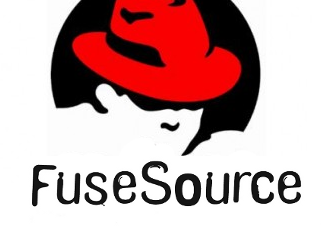Why did Red Hat decide to buy FuseSource?
 Last month, Red Hat announced the purchase of Fusesource , a company developing several middleware products. In an interview with InternetNews, Red Hat CEO, James Whitehurst (Jim Whitehurst) told why Red Hat decided to buy FuseSource and not develop its own competing solutions.
Last month, Red Hat announced the purchase of Fusesource , a company developing several middleware products. In an interview with InternetNews, Red Hat CEO, James Whitehurst (Jim Whitehurst) told why Red Hat decided to buy FuseSource and not develop its own competing solutions.When to buy a competitor, and when to develop your own products? This is a difficult question for any company, but it becomes even more difficult when it comes to open source software.
Indeed, in this case, you can get for free all the achievements of your competitors. This is a situation that Red Hat constantly faces, and they have developed their own approach to resolving this issue. "Every company must understand what their strengths are, and it seems to us that we are good at being a catalyst for the OpenSource community," Whitehurst says.
')
The most well-known FuseSource technology is the ESB (Enterprise Service Bus, Enterprise Service Bus) and this is exactly what Red Hat doesn't do very well. When Whitehurst began to study the players on the ESB technology market, he was not looking for a sales leader, but for the strongest community. In the case of ESB, this turned out to be the Apache Camel project. On the ESB market, there are also Mulesoft and Talent, but according to Whitehurst, none of these companies have the same community as Apache Camel.
When it became absolutely clear that this is the community that should be selected, the next step in the “buy or develop” question was to collect information about the main developers of this project. “Can we hire enough people to complete the tasks, or is there any company that employs key Apache Camel developers?” Whitehurst asked.
“Fusesource employs ten Camel developers, so our decision was obvious. If you sincerely believe that a strong community is needed, then you need to act very carefully so as not to disrupt the established approaches in the work of this community, ”Whitehurst explains.
But there are times when Red Hat can do on its own. This is what happened with the OpenStack cloud IaaS platform. Over the past year, Red Hat has become one of the main development companies of OpenStack and a platinum member of the OpenStack Foundation being created. “We looked at OpenStack and said that we don’t need to buy someone,” Whitehurst said. “This project has a large number of dispersed contributors, so it’s easier for us to simply hire several OpenStack developers.”
Who will be next on the Red Hat shopping list?
When it comes to deciding which company Red Hat will acquire next, there are criteria that Whitehurst considers important. First, it is necessary that the company fit into the technological space in which Red Hat operates. And secondly, this company should have a good community, because Red Hat needs a team, not just a few people. This is fundamentally the moment, although at first glance, it is simply a matter of hiring developers.
“When you buy an open-source company, if people don’t come to you and don’t want to stay, then what are you paying money for? After all, developers are the main value of such companies. ”- says Whitehurst.
For example, Red Hat recently acquired Gluster , which now forms the basis of the Red Hat Storage product. The people who worked at Gluster wanted to work at Red Hat, so the takeover was very easy. “With FuseSource, the key issue was not the price, but whether employees would like to continue developing products and become part of Red Hat,” Whitehurst says.
Looking forward, on Whitehurst's radar, technologies such as network management software, big data and analytical software. At the recently held Red Hat Sammit 2012, Red Hat employees emphasized working with Nicira (network management), talked about MongoDB plans for the big data market and Jaspersoft in terms of analytics. However, not all companies may be interested in Red Hat acquisitions. Whitehurst noted that some of them might want to maintain their independence and go for an IPO themselves.
Source: https://habr.com/ru/post/148241/
All Articles